 Vampire Weekend's Surprising Jewish Stories
Vampire Weekend's Surprising Jewish Stories
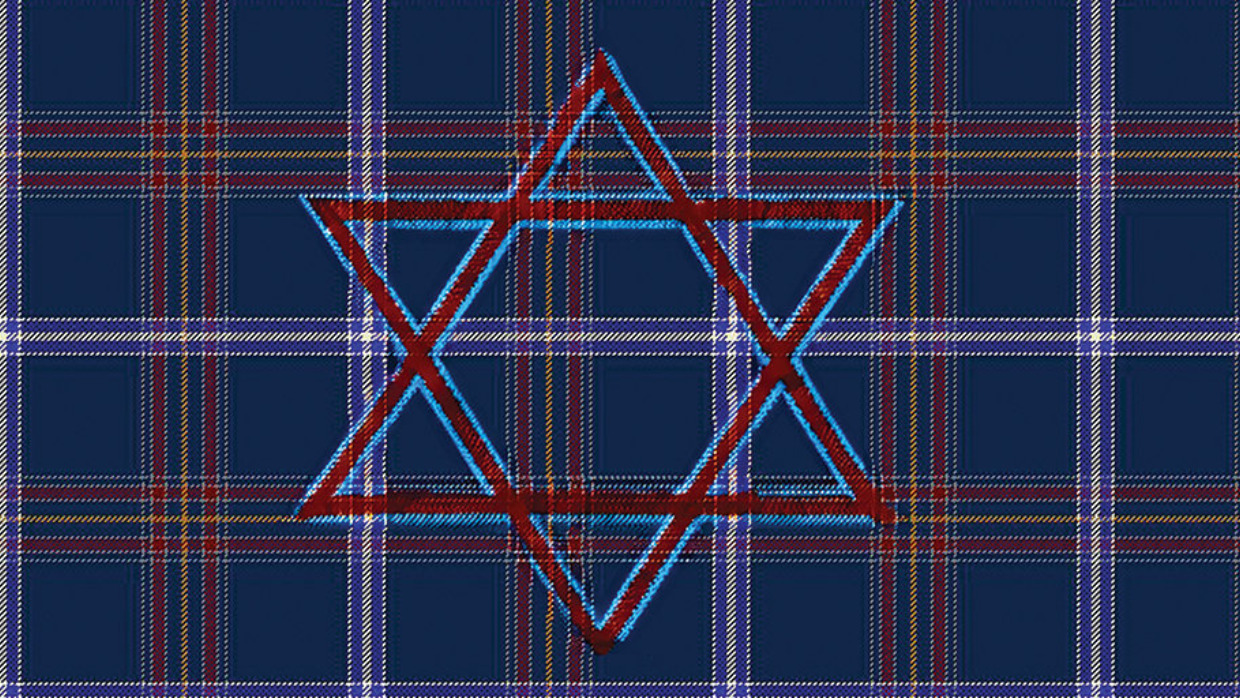
Jewish Geography

Jewish Geography
5 min read
Scotland is known for bagpipes, kilts, and the Loch Ness Monster, but it’s also home to a thriving Jewish community and Jewish visitors from around the world.
Bagpipes. Kilts. “Auld Lang Syne.” The Loch Ness Monster. Whisky. All these things come to mind when you say “Scotland.” But most people don’t think about the Jewish community there. They don’t even know it exists. Scottish Jews have made their own small but vibrant community in this country that’s part of the United Kingdom. Since 1691, when the first Jew was recorded to have lived in the town of Edinburgh, the Jewish people have become an active part of the culture there.
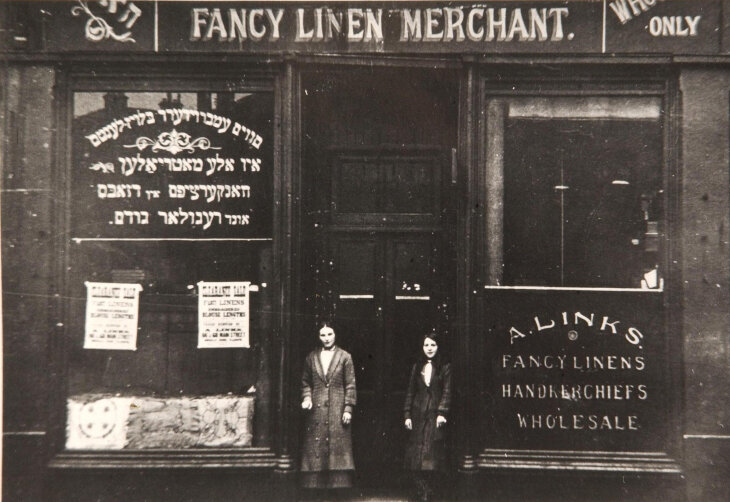 Glasgow Jewish linen merchant. Courtesy of the Scottish Jewish Archives Centre
Glasgow Jewish linen merchant. Courtesy of the Scottish Jewish Archives Centre
Learn more about Jewish Scotland, and then put it on your bucket list to visit and meet members of this tight-knit and warm community.
While the first Jew recorded in Scotland was in 1691, the first formal community was founded in Edinburgh in 1816. During World War II, the Jews of Eastern Europe fled the Nazis and ended up in the United Kingdom, with some of them staying in England, and others going to Scotland.
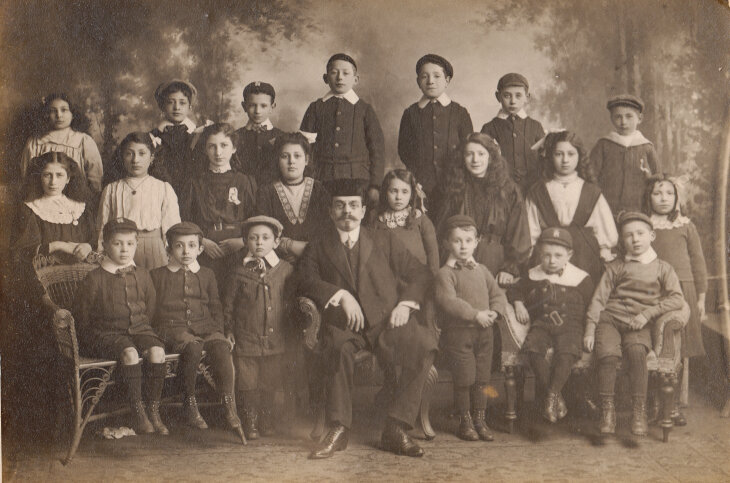 Rev Gershon Spilg and the Falkirk Cheyder. Courtesy of the Scottish Jewish Archives Centre.
Rev Gershon Spilg and the Falkirk Cheyder. Courtesy of the Scottish Jewish Archives Centre.
By the 1950s, there were 18,000 Jews in Scotland, with the majority in Glasgow, a port city. They lived throughout the city and in the community of Giffnock, where they attended the Giffnock Newton Mearns Synagogue, a shul established in the 1930’s. Today, the Orthodox synagogue holds Shabbat and holiday services. The Edinburgh Hebrew Congregation in Edinburgh, which is one hour from Glasgow, holds weekly services and is home to a showcase of Jewish musicians, actors, and comedians during the world-famous Edinburgh Fringe Festival every August. Currently, there are less than 3,000 Jews in Scotland, with some of the population dying, intermarrying, or moving out of the country. Many younger members of the community made aliyah to Israel.
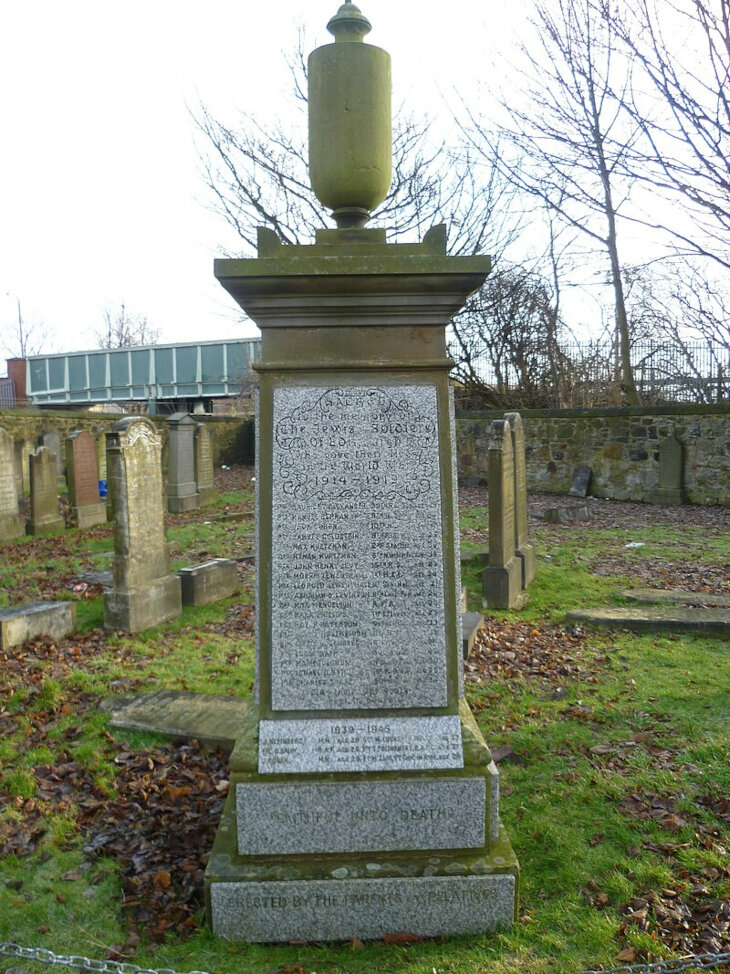 Memorial to Edinburgh's Jews who died fighting in the world wars (Kim Traynor, Wikipedia)
Memorial to Edinburgh's Jews who died fighting in the world wars (Kim Traynor, Wikipedia)
For the Jews that are there – as well as visitors coming from all over the globe – Chabad Lubavitch of Scotland operates a synagogue in Glasgow as well as a kosher restaurant, Sora's Cafe & L'Chaim's Restaurant, which serves traditional Scottish food like fish and chips and takeout for Shabbat and the holidays. Close to L’Chaim’s is Mark’s Deli, a kosher restaurant with an attached grocery store that sells a kosher haggis; a haggis is a Scottish dish made up of a sheep’s heart, liver, and lungs, oatmeal, and spices. The kosher version at Mark’s Deli is made of ground lamb, onions, and barley, and the Jews of Scotland enjoy eating it to celebrate Burns Night every January 25th. Burns Night commemorates the life of the famous Scottish poet Robert Burns (also called Rabbie Burns) who wrote “Auld Lang Syne” and “To a Mouse.”
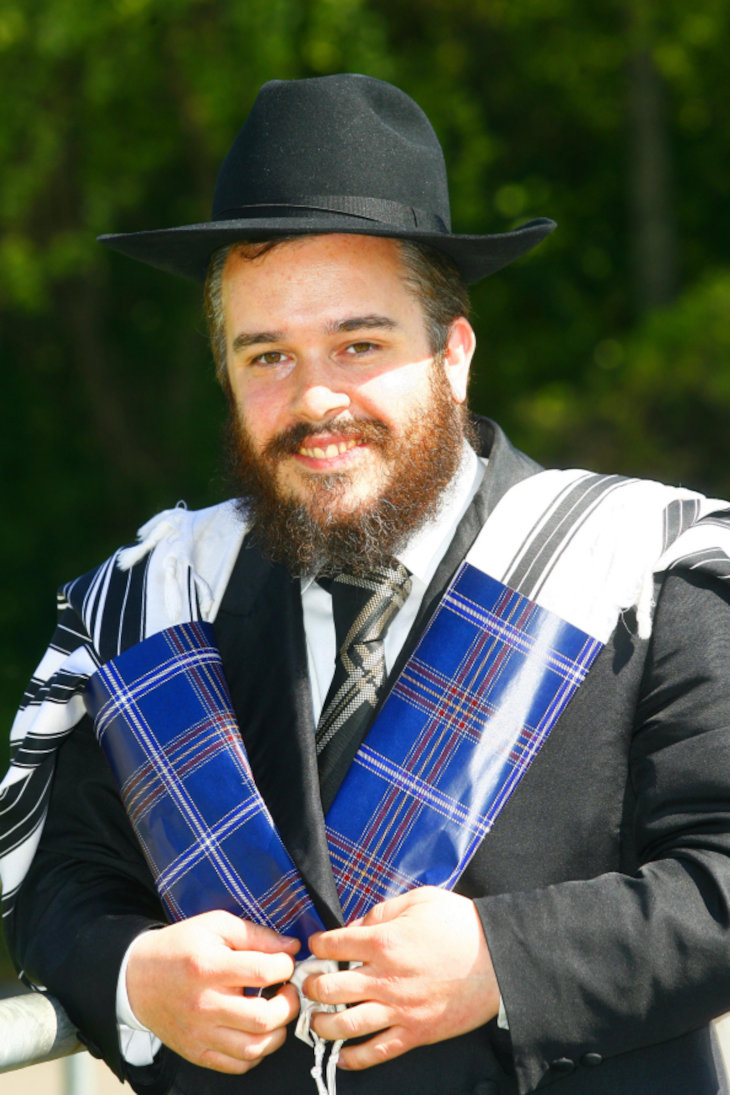 Rabbi Mendel Jacobs with his kosher tartan prayer tallit.
Rabbi Mendel Jacobs with his kosher tartan prayer tallit.
In 2008, a dentist from Glasgow, Dr. Clive Schmulian, created the first Scottish tartan, the Shalom tartan, which is registered with the Scottish Register of Tartans. The tartan is a patterned cloth that is often seen on Scottish kilts. In 2016, Rabbi Mendel Jacobs, a Chabad emissary, created a second tartan. The colors of the tartan are blue and white, which are the Scottish and Israeli flags, as well as a gold line that represents the gold from the Ark in the Torah. When visiting Scotland, tourists can purchase a Jewish tartan kilt, tallit bag, yarmulke, necktie, mug, or mouse pad. Tourists can also check out the Scottish Jewish Heritage Centre in Glasgow and learn more about the community. It’s located in the historic Garnethill Synagogue, which opened in 1879, and tours feature information on how Scottish people helped Jews find safety during the Holocaust.
 Inside the Garnethill Synagogue
Inside the Garnethill Synagogue
Local news about the Jewish Scottish community can be found in The Jewish Chronicle, the oldest continuously published Jewish newspaper in the world that covers the entire community in the United Kingdom and beyond.
Native Glaswegian Jew Adam Henderson runs Kosher Scotland, a luxury travel company that brings tourists to Scotland to enjoy kosher food and whisky. Henderson grew up in the country and now splits his time between Israel and Scotland. “After nearly a decade of living in Israel and being asked on almost a daily basis about Scotland, I decided to finally start doing tours to Scotland so people could see for themselves what it's like,” he said. “Bagpipes, the Loch Ness Monster, whisky, castles, and kilts tend to be the most popular topics. You can see all of them on our trips.” Scotland is home to many distilleries, including Glenfiddich, Talisker, Glenlivet, Highland Park, and Laphoraig. There are a small number of whisky bottles that have kosher certification, according to Henderson, but in the Kosher London Beth Din (KLBD) kosher guide, it states that all whiskies that are matured only in bourbon casks are kosher – and this is something most religious Jews hold by.
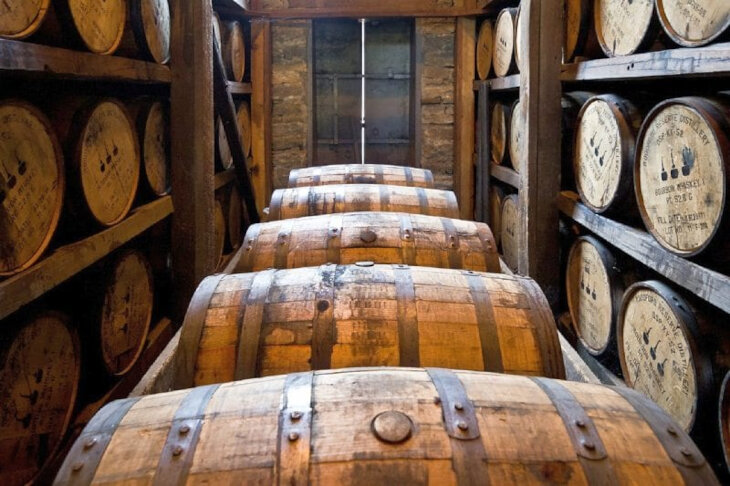
“The debate is mainly around whether whisky matured in sherry casks is kosher or not,” Henderson said. “There are a number of rabbis who permit it and a number of rabbis who forbid it. When people come on our trips, we ask them in advance what their preference is and tailor the trip accordingly.” The Kosher Scotland tours come with a customized itinerary, whisky tastings based on a guest’s preferences, and kosher food made by the company’s chefs. This year, due to the success of his whisky tours, Henderson is planning on running the first Jewish Heritage Trip to Scotland, where he said, “people can discover more about the history of the Scottish Jewish community for themselves.” He continued, “[Scotland] was a very quiet and pleasant place to grow up. It’s a great country, and the Scottish Jews are lovely people.” For further reading, read: 6 Surprising Facts about Jewish Scotland

I once heard from a Scottish Rabbi that the Scottish people are not descendants of Eisav but some other nation, so they do not have the antisemitism found across Europe. In one way this has been a blessing for Jewish People who settled there, but from the other side, he told me it has contributed to the virtual disappearance of Jewish life in Scotland via intermarriage. In the 1950s I think there were 15 synagogues in Glasgow, whereas today only the Giffnock shul synagogue is operational, while another synagogue has become a museum. My impression is that outside Glasgow you will not find active observant Jewish life, although no doubt there is a reform presence.
Nice article, but some omissions and inaccuracies, I think. In the 1930s and 1940s, it was mainly the Jews of central Europe who fled the Nazis and came to Britain, rather than Eastern Europe. The local Jewish newspaper is an edition of the Jewish Telegraph - very little about Scotland gets reported in the London-based Jewish Chronicle. More accurate to say that there are 2 Jewish tartans - only fair to also mention the Shalom Tartan. Should mention Rabbi Moshe Rubin, the senior Orthodox rabbi of Scotland, with by far the largest congregation and also the Student Chaplaincy couple, the Shabos, based in Edinburgh - and the Reform and Liberal congregations.
It’s always good to learn about Jewish communities in various places. You mentioned the Chabad in Glasgow, but unfortunately failed to mention the wonderful work Pinny and Gitti are doing with the primarily university community in Edinburg. I encourage you to contact them and revise your article.
I was lucky enough to be with Chabad in Edinburgh for Kol Knidre this year. The meal before the service was delicious and I shared it with many lovely, friendly university students and other visitors. The service itself was packed with many congregants, students and visitors. Thanks to all for making me feel welcome!
Fake haggis. Ridiculous: Either make the real thing or just forget the whole idea.
I was proud to have served in Paratroopers and call my dear friend with Morris Katz who died as a hero in Yom Kipper War 1973. He made aliyah from Scotland to Kibbutz Lavi. May his soul rest in peace
Straight after school , 3 days a week we had cheder for One and a half hours and also on Sunday mornings for 3 hours. Some of us continued lessons of Mishnah, Tannach, etc in 2ndary schooldays. The boys went on to a Yeshivah in Glasgow after school. There was a good social life and plenty to do. Gradually, couples and singles left for England, Australia, Canada, America and Israel, and the congregation also dwindled from deaths and intermarriage, leaving now, only 2 main shuls, Giffnock & Newton Mearns which have recently amalgamated to Giffnock premises, and Garnethill in the west end. These, although once overflowing, now remain sadly comparably empty. There is also the Lubavitch shul in Giffnock in the Maccabi halls, where all are welcome.
As for touring, it is the best…
The Jews from Eastern Europe not only went to Scotland and England but to Ireland, Dublin and Belfast, too. My grandparents were from Belfast and came to Scotland around 1934 just before my dad’s Barmitzvah. My grandfather was originally from Poland from where many other Scottish Jews originated. Either my grandfather or great grandfather was a founder member of Queens Park Shul. A list of names of founders was on the wall facing the front door. It is probably in the archives now in Garnethill. There were at least 5 Shuls in Glasgow when I grew up and a thriving community. We did not have a Jewish school but the Jewish kids stuck together. We had a Jewish class in my school in the mornings while the non Jewish kids had prayers and bible in the classrooms. To be cont……
Kol HaKovod to Rabbi Jacobs. He taught me to read the siddur and daven when I was in my 20s finishing my university degree. I am still friends with him. Now I live in Israel with my family. I still love Scotland and visit when I can to see my parents, brother and sister whoa re there. It's a shame there was never a Jewish high school - maybe more people would have stared?
In theory it must be permitted, lab grown pork/ fake pig meat as the kosher ban is due to unclean animal meat, which lab grown can't be.
Kosher food status is not due to physical cleanliness; rather it’s based on the spiritual “cleanliness”; designation of the animal, which can include its spiritual nature among other things. So, the fact that a lab is physically clean is not something that would seem sufficient as a canceling factor to the kosher status.